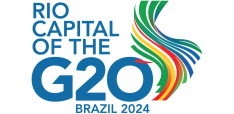What Rough Beast – Trump and the Purge of America

Scott Montgomery on the appropriate historical parallel for Trump's purge of organisations and professions he fears.
I will begin by saying it is difficult, in the shadow of events now taking place, to portray the chaos, disorientation, loss, and dread that have now settled over so many institutions here in the US, so many individual lives. My university is in disarray, with tinges of panic; my own department has lost key funding, and my own future, as lecturer, is now uncertain and possibly nonexistent.
Down the road, a major law firm that has represented Democrats, including Hillary Clinton, and where a longtime friend and associate of mine is a partner, has been directly attacked by a Trump executive order. German friends who’ve lived in Seattle for more than two decades had their test for citizenship canceled (they waited until Germany finally allowed dual citizenship last year); if not for their two American-born children, they may well have been deported. The son of another friend fell into a deep depression after a promising research career with the Environmental Protection Agency was killed. Meantime, several grad students under my care have finalized their plans for emigrating to the Netherlands.
These are only a few stories of the last several weeks. Everyone I know has others; we share them, over dinner, as if relating the deaths of relatives. But rather than turn this column into a litany of these, I’d like to take a somewhat more clinical view. Because this period will be marked as one of particularly dark significance.
Many terms have been applied to the actions being pursued domestically by the Trump Administration: “chain saw,” “wrecking ball,” “blitzkrieg,” “power-grab.” These, however, don’t adequately match the reality now affecting government employees at every level, media personnel, university officials, staff, and faculty, healthcare professionals, chief executives, film producers, book publishers, primary school teachers, and, not to be overlooked, members of Trump’s own party. Despite many lawsuits filed against the Administration’s actions, a majority of these people in positions of authority have remained silent. A single word or tweet from the White House has proven enough to bring ruin and loss.
History provides a better term for what is happening—a purge. Purges, we recall, do not come without elements of terror. This, too, is apt for what now exists. People in dozens of professions, from migrant workers to research scientists, do not fear for their lives in an immediate sense but for their livelihoods and for everything else. Levels of physical threat against Congresspeople (both Democrats and Republicans), lawyers, judges, and many others have reached an unprecedented peak, and now include their families, their children. This, in a country swarming with guns, routinely owned by those who believe such threats are legitimate.
Much seems inevitable, given the program of political, constitutional, and societal upheaval now underway. Supporters applaud the overall effort to scale back government, cut the federal workforce, end many functions. But this purported victory over a phantasm (the “Deep State”) has the bitterest of ironies, waged as it is by an apotheosis of centralized power. It veils, meanwhile, other objectives—eliminating oversight bodies and personnel, replacing leadership of the military, intelligence, justice, and law enforcement sectors with people whose primary qualification is abject loyalty.
The archetype for any such episode, admittedly, goes back to Stalin’s murderous purges of the 1930s. Those, too, defined an overall effort to secure ultimate power, eliminate and terrorize opposition, end “waste and inefficiency,” and impose controls on intellectual life, all in the name of a “great” Soviet future. Stalin’s purges killed and imprisoned millions—the infamous Gulag was built at this time—but it also involved the firing and demoting of a great many others. “Cleansing,” a term Stalin liked, worked well for his removal of party officials, Red Army leaders, government bureaucrats, as well as scientists, doctors, and engineers.
The U.S. in 2025 does not allow Trump to be a murderer nor to build a Gulag. It does allow him to ruin the lives of millions. Such is being done by firing or deporting them en masse, ending their careers, canceling their research, reducing their healthcare, and any of a dozen of other ways that treat them as expendable.
In Stalinesque language, Trump speaks of “swift and unrelenting action” against those who comprise “the enemy from within.” Once and not long ago, this kind of speech coming from his lips was mostly viewed as bluster. So was his talk of tariffs, mass firings, and mass deportations. No one is likely to make this error again. A recent and now trademark phrase—"He who saves his Country does not violate any Law.”—could well be the epithet for any leader embarking on a largely nonviolent program to “liquidate” the opposition.
Purges do not need to be festivals of slaughter conducted by secret police. Indeed, the first such event using the term, Pride’s Purge (1648), involved soldiers of the New Model Army taking control of London and, under Colonel Thomas Pride, preventing perceived opponents from entering Parliament. More recent, there have been the likes of Alberto Fujimori in Peru, Hugo Chavez in Venezuela, and the repeated purges of perceived opponents under Xi Jinping (though, in this case, imprisonment has been common). With Trump, on the other hand, “nonviolent” does not entirely apply. Deaths are very much in the cards. Eradication of USAID means withdrawal of life-saving medicines, nutrition, and other critical support for a great many people. Then there is epistemological violence: deep cuts to research and disease-related programs, to climate-related study, even—a particularly stunning target, given the current measles outbreak—sudden cancellation of studies into vaccine hesitancy.
For Stalin, professors, scientists and engineers were required targets. They were the controllers of knowledge, thus, to no small degree, the substance of Soviet success and its future dominance. No less, research had been deeply infected with ideas from Europe, capitalist ideas that demanded freedom of inquiry, international collaboration, and state support without direct political interference in the process of knowledge-making and its results. All of this Stalin found impossible, hugely dangerous. It defined the exact nemesis of all that socialist ideology required. The Narkompros (People’s Commissariat for Education) was only part of his methods to undo the damage. Its key goal was to take back control over university teaching and curricula, eliminating “ideologically harmful” individuals and departments—even entire areas of research. It was essential to ensure that unwanted, “cosmopolitan” ideas would not taint young minds with toxic, anti-Soviet ideas. We hear something of this kind today, in the repeated invocation of “woke” entities that have poisoned America’s cultural and commercial landscapes.
To be sure, the parallels with 1930s Russia make sense only as analogy. Yet, in broad outline, the echoes, however distant, are undeniable. Hitler’s purges had a racial character; Stalin’s were more about eliminating perceived threats to his own power—those accused of treason, ideological heresy, and above all, disloyalty to the party and the future of the state. Trump’s purge is not about ideology, but it is about power, the identification of enemies, and intimidation. Even at this early stage of the second Trump regime, the terminology of “repression” has begun to look relevant.
By CENTRAL COMMITTEEOF PPSH: CENTENARY OF THE BIRTH OF J. V. STALIN


